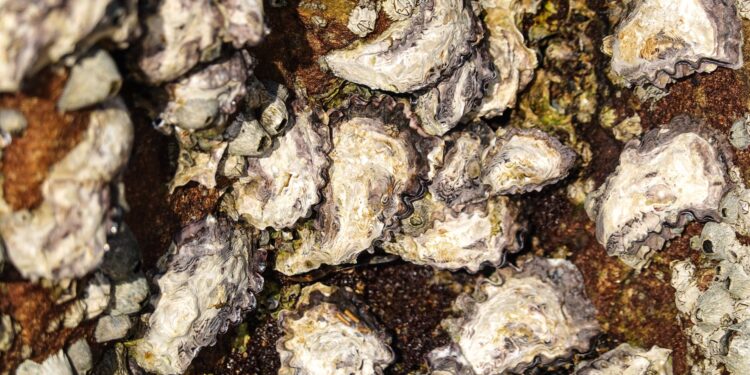Credits: Magda Ehlers from Pexels
If you think oysters are just delicious seafood, think again. Freshwater oysters produce an adhesive that could hold the secret to developing more environmentally friendly glues in applications ranging from dental care to construction to shipping. An international research team recently used the University of Saskatchewan’s (USask) Canadian Light Source (CLS) to determine what’s in this unique adhesive.
Proliferating in African rivers and lakes, Etheria elliptica oysters produce a special material that allows them to stick to wood or other oysters, creating intricate underwater reefs. Never studied before, this oyster glue has characteristics rarely found in similar organisms: it is made of a mineral called aragonite that the oyster arranges so that it is soft on the outside and progressively harder on the inside.
“These oyster shells don’t look exactly like our teeth and bones, but they have a lot of similarities,” says Rebecca Metzler, a physics professor at Colgate University in New York State. “If the adhesive can work for oyster shells, maybe it could work just as well for what’s going on inside us.”
Metzler and his team discovered that oyster glue is so sticky because it combines aragonite with special proteins produced by the oyster. This information could pave the way for developing better synthetic, “green” glues that mimic the oyster’s adhesive properties.
The work is published in the journal Advanced Materials Interfaces.
“Because I’m looking at this biological tissue, I need a certain energy range, and the Canadian Light Source (CLRS) has the unique feature of having both the microscope and the energy range,” Metzler explains. “You can look at your sample and get the spectral data that you need to be able to answer questions about its composition and how these things are structured.”
His team discovered that oyster glue is made up of tiny aragonite particles that clump together to form crystals of random shapes, sizes and orientations, information that Metzler says can be used to create synthetic versions in the lab. The research also drew on data collected at the Advanced Light Source (ALS) synchrotron.
The results of this study could have multiple applications, according to Metzler. Glues synthesized from the oyster adhesive could be used to fix dental implants, replace glues currently used in the packaging industry with biodegradable alternatives, or even build structures underwater.
Metzler’s research could also prove crucial for the ecological conservation of Etheria elliptica oysters. With freshwater mussel populations declining globally, understanding how these organisms create underwater reefs is critical to preserving the habitats that support oyster survival in a warming climate, as well as educating local communities about sustainable oyster harvesting.
Since the oysters used in Metzler’s study were collected years ago, the next step will be to study the impact of climate change on more recent samples.
“If there was a change similar to what we see in other organisms, that would be another thing we would be interested in trying to understand,” Metzler says.
More information:
Metzler, Rebecca A. et al., Exploring the mineral composition, structure, and function of a freshwater bivalve adhesive. Advanced Materials Interfaces (2024). DOI: 10.1002/admi.202300954
Provided by Canadian Light Source
Quote:Freshwater oysters could hold key to developing stronger, ‘greener’ adhesives (2024, September 17) retrieved September 17, 2024 from
This document is subject to copyright. Apart from any fair dealing for the purpose of private study or research, no part may be reproduced without written permission. The content is provided for informational purposes only.



